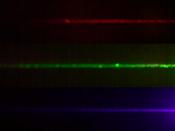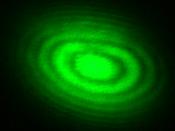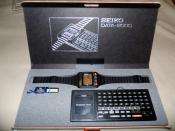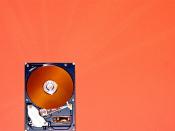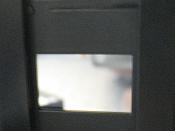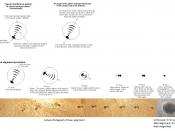Holographic technology involves true 3-D recording of information. The principal system components consist of a laser, a Spatial Light Modulator (SLM), storage media, detector and transform optics. Fig. 1 illustrates schematically the elements of holographic recording and read out of data. Data are stored holographically by recording in the storage medium the optical interference pattern that is created by mixing an encoded data beam with a coherent reference beam. The data are conveniently encoded as two-dimensional binary pages of bright and dark spots (corresponding to the "1s" and "0s" of the digital data) using a SLM, a device that acts as a collection of independent "light valves." For read out, a laser beam equivalent to the reference beam is projected onto the recorded interference pattern in the media, and the diffracted beam carrying the reconstructed data page is imaged onto a detector. In the commercial product, lasers will interact with spinning disk media similarly to CD or DVD systems.
Very high data densities (>100 bits per square micron versus about 10 bits/sq. micron for most magnetic hard drive products) are achieved by optically "multiplexing" the recorded pages, allowing numerous pages to be stored within a single small spatial region of the media. The ability to multiplex recorded pages is derived from use of the thickness (3rd dimension) of the media. Consequently, CAPACITIES OF >100 GB ARE ACHIEVABLE in half-millimeter thick media IN A STANDARD 5.25-inch DIAMETER DISK FORMAT for our introductory products. Additionally, data rates can be significantly enhanced since data are stored and transferred as pages of information (ca. 1 million bits per page), compared with sequential transfer of single bits from conventional storage technologies. DATA RATES OF >750 MB/sec ARE POSSIBLE FROM A SINGLE HEAD.
